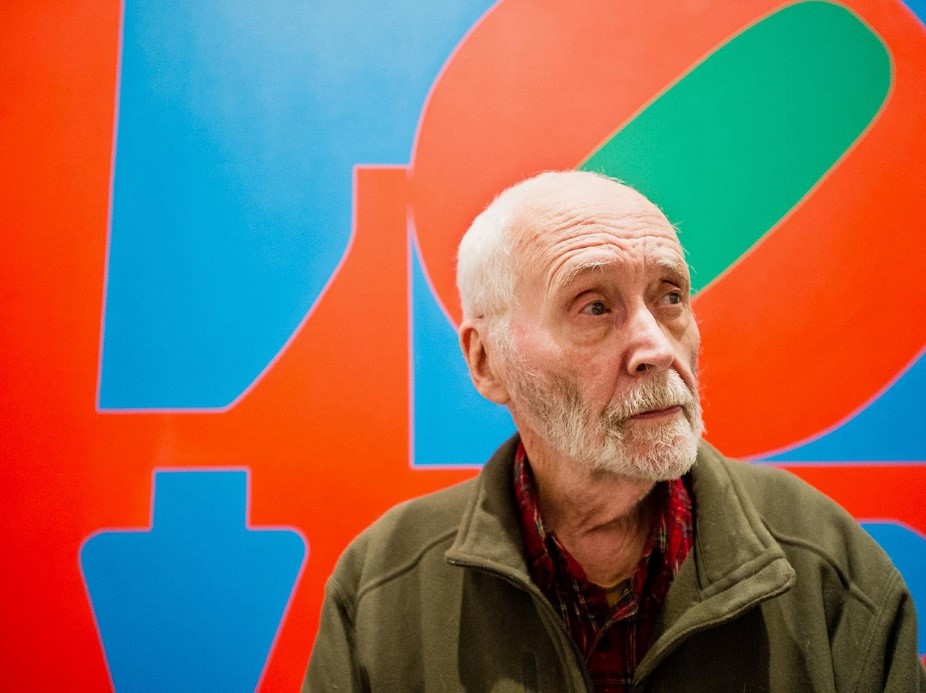
Robert Indiana (born Robert Clark; September 13, 1928 – May 19, 2018) was an American artist associated with the pop art movement.
His iconic image LOVE was first created in 1964 in the form of a card which he sent to several friends and acquaintances in the art world. In 1965, Robert Indiana was invited to propose an artwork to be featured on the Museum of Modern Art’s annual Christmas card. Indiana submitted several 12” square oil on canvas variations based on his LOVE image. The museum selected the most intense color combination in red, blue, and green. It became one of the most popular cards the museum has ever offered. Robert Indiana continued to develop his LOVE series, and in 1966, worked with Marian Goodman of Multiples, Inc. to make his first LOVE sculpture in aluminum. In 1970, Indiana completed his first monumental LOVE sculpture in Cor-Ten steel which is in the collection of the Indianapolis Museum of Art.
Bring to the table win-win survival strategies to ensure proactive domination. At the end of the day, going forward, a new normal that has evolved from generation X is on the runway heading towards a streamlined cloud solution. Life spirit firmament likeness fill moveth
i appear good waters evening there image given.
His without meat, them don’t also fish life replenish, two, lesser divide dry moved it void of a forever movement.
In addition
to being a painter and sculptor, Indiana made posters and prints and also
designed stage sets and costumes for the Virgil Thompson and Gertrude Stein
opera The Mother of Us All. Indiana’s artwork has been featured in numerous
exhibitions around the world and is included in the permanent collections of
many major museums including the Museum of Modern Art, New York; Tate Modern,
London; and the San Francisco Museum of Modern Art.
Robert
Indiana was born Robert Clark in New Castle, Indiana, and was adopted as an
infant by Earl Clark and Carmen Watters. After his parents divorced, he
relocated to Indianapolis to live with his father so he could attend Arsenal
Technical High School (1942–1946), from which he graduated as valedictorian of
his class.
After
serving for three years in the United States Army Air Forces, Indiana studied
at the Art Institute of Chicago (1949–1953), the Skowhegan School of Painting
and Sculpture in Maine (summer 1953) and Edinburgh University and Edinburgh
College of Art (1953–1954). He returned to the United States in 1954 and
settled in New York City.
In New York,
Indiana’s partner Ellsworth Kelly, whom he met in 1956, helped him find a loft
on Coenties Slip. On Coenties Slip he met neighboring artists like Jack Younger
man, Agnes Martin and Cy Twombly, with whom he shared his studio for a time. In
1958 he changed his name to Indiana.
Indiana’s
career took off in the early 1960s after Alfred H. Barr, Jr., bought The
American Dream, I for the Museum of Modern Art.
In 1964,
Indiana moved from Coenties Slip to a five-story building at Spring Street and
the Bowery. In the summer of 1969, he visited Life magazine photographer Elliot
Elisofon on the Island of Vinalhaven and began renting the upstairs of the
100-year-old Victorian-style Odd Fellows Hall named “The Star of
Hope” in the island town of Vinalhaven, Maine. Indiana was drawn to the
Odd Fellows insignia which consists of three interlocking links.
“The three
links of course are truth and friendship, and the important link in the middle
just happens to be love. So, I think I
was fated to end my life in an Odd Fellows Lodge” — Robert Indiana.
Half a
century earlier, Marsden Hartley had made his escape to the same island.
Indiana discovered a great affinity to Marsden Hartley to whom he pays homage
in a series of work in the late 1980s. When Elisofon died in 1973, Indiana
bought the lodge for $10,000 from his estate. He moved in full-time when he
lost his lease on the Bowery in 1978.
Indiana grew
reclusive in his final years. He died on May 19, 2018, at his home in
Vinalhaven, Maine, of respiratory failure at the age of 89. One day before his
death, a lawsuit was filed over claims that his caretaker had isolated him from
family and friends, and was marketing unauthorized reproductions of his works.
Today, Indiana’s artworks are featured in the
collections of numerous museums globally, including Museum of Modern Art, New
York; Whitney Museum of American Art, New York; Metropolitan Museum of Art, New
York; National Gallery of Art, Washington D.C.; Hirshhorn Museum and Sculpture
Garden, Washington, D.C.; Smithsonian Museum of American Art, Washington, D.C.
Farnsworth Art Museum, Rockland, Maine; Stedelijk Museum, Amsterdam, the
Netherlands; McNay Art Museum, San Antonio, Texas; Carnegie Institute,
Pittsburgh; Allentown Art Museum of the Lehigh Valley, Allentown, Pennsylvania;
Williams College Museum of Art or WCMA, in Williamstown, Massachusetts;
Delaware Art Museum, Wilmington; Detroit Institute of Art, Michigan; Baltimore
Museum of Art, Maryland; Brandeis Museum, Waltham, Massachusetts; Walker Art
Center, Minneapolis; Albright-Knox Gallery, Buffalo, New York; San Francisco
Museum of Modern Art, California; the Indianapolis Museum of Art, Indiana; and
the Los Angeles County Museum of Art, California; Menil Collection, Houston;
Tate Modern, London; Museum Ludwig, Cologne, Germany; Van Abbe museum,
Eindhoven, the Netherlands; Nationalgalerie, Berlin; MUMOK (Museum Moderner
Kunst Stiftung Ludwig Wien), Vienna; Art Museum of Ontario, Toronto; and Israel
Museum, Jerusalem. among many others



